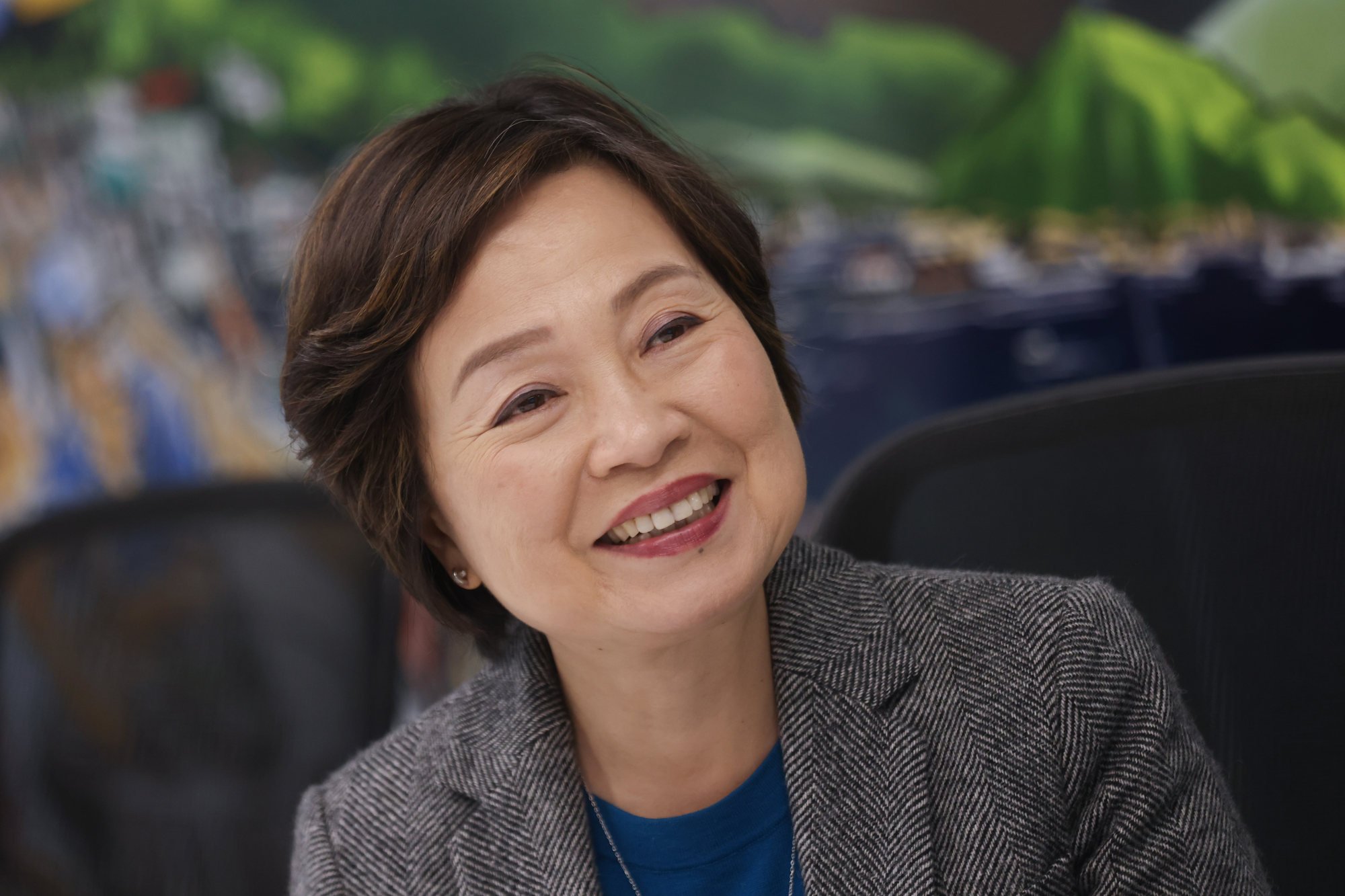
Number of Hong Kong pupils in international schools tripled in 11 years amid decline in non-local enrolment
- Proportion of non-local pupils in international school enrolment fell from 81 per cent in 2013 to 65 per cent last year
- Minister Christine Choi dismisses suggestion parents did not want to send children to local schools because of the increasing emphasis on national education
Total enrolment in the city’s international schools rose by about a fifth over that period, from about 35,000 to 42,000 pupils, but the split between locals and non-locals did not rise proportionally.
Non-local students made up 81 per cent of the international schools’ enrolment in 2013, but only 65 per cent last year, according to statistics provided by the Education Bureau to the legislature.
Their number fell from 30,259 in the 2013-14 school year to 27,390 in the current one. Meanwhile, the number of locals tripled from 5,321 to 14,684.
Education minister Christine Choi Yuk-lin told the Post that Hong Kong parents had many reasons for sending their children to international schools, including the personality of their kids and where they might study in the future.
“There are so many reasons indeed. If you just attribute it to a simple reason, such as them maybe not liking a particular subject or an activity, I think it is not the case,” she said.
Hong Kong authorities publish first patriotic school materials for English classes
She pointed to “a welcome response” to the government-funded exchange tours to mainland China for senior-level secondary pupils studying the core subject, citizenship and social development. The subject replaced liberal studies after the city’s social unrest in 2019, amid accusations by some critics that the course had contributed to the radicalisation of young people.
Choi said she had received positive comments from parents about the activities during the compulsory mainland visits, which were only for pupils in local schools.
“I’ve seen students coming back from the mainland trips who shared what they learned and showed they really enjoyed it,” she added.
Chu Kwok-keung, a lawmaker representing the education sector, said the relocation of international companies from Hong Kong and the city’s strict travel restrictions during the pandemic contributed to the decline in the number of non-local students in recent years.
The vacancies in the international schools were then taken up by locals.
“Most parents may think the quality of international schools is better and plan to send their children overseas to study overseas in future, and that is why they choose international schools,” he said.

The Education Bureau defines local students as Hong Kong permanent residents who hold only the city’s passport.
Most international schools operate under an agreement to have no fewer than 70 per cent non-local students, but some schools failed to meet that threshold as more locals enrolled.
Concerned about the trend, lawmakers last year criticised the lack of consequences for schools that did not meet the requirement.
The English Schools Foundation (ESF), the city’s largest international school group with 22 schools at all levels, revealed that the proportion of students with Hong Kong passports doubled since 2013, with a drop for most other nationalities including Britons, Australians, Americans and Indians.
The proportion of British passport holders shrank from 21 per cent in 2014-15 to only 12 per cent in the current school year, while Hong Kong passport holders rose from 24 per cent to 43 per cent.
The Education Bureau said it had reminded schools to meet the required proportion of non-local enrolments, warning that it could terminate or refuse to renew their service agreements and take back their sites.
‘Hong Kong primary schools should overhaul exam formats to reduce student stress’
An ESF spokesman told the Post the group was “acutely aware” of its responsibility to maintain the ratio of local to non-local students and appreciated that the requirement was relaxed during the pandemic years.
He said more locals joined during that period and they would continue to affect the ratio as they progressed through school over the years to come, but the ESF was focused on getting back on track.
“There is no doubt that the demographic breakdown of Hong Kong has changed and is changing. The government has been explicit in its efforts to attract new people to move to Hong Kong and this is something that we have been very keen to support,” he said.
In her interview with the Post last month, education minister Choi said the government would not ask the international schools to close down if they could not meet the requirement.
Having an adequate presence of international schools was good for the city’s schemes to attract talent and would also draw foreign investment, she added.

